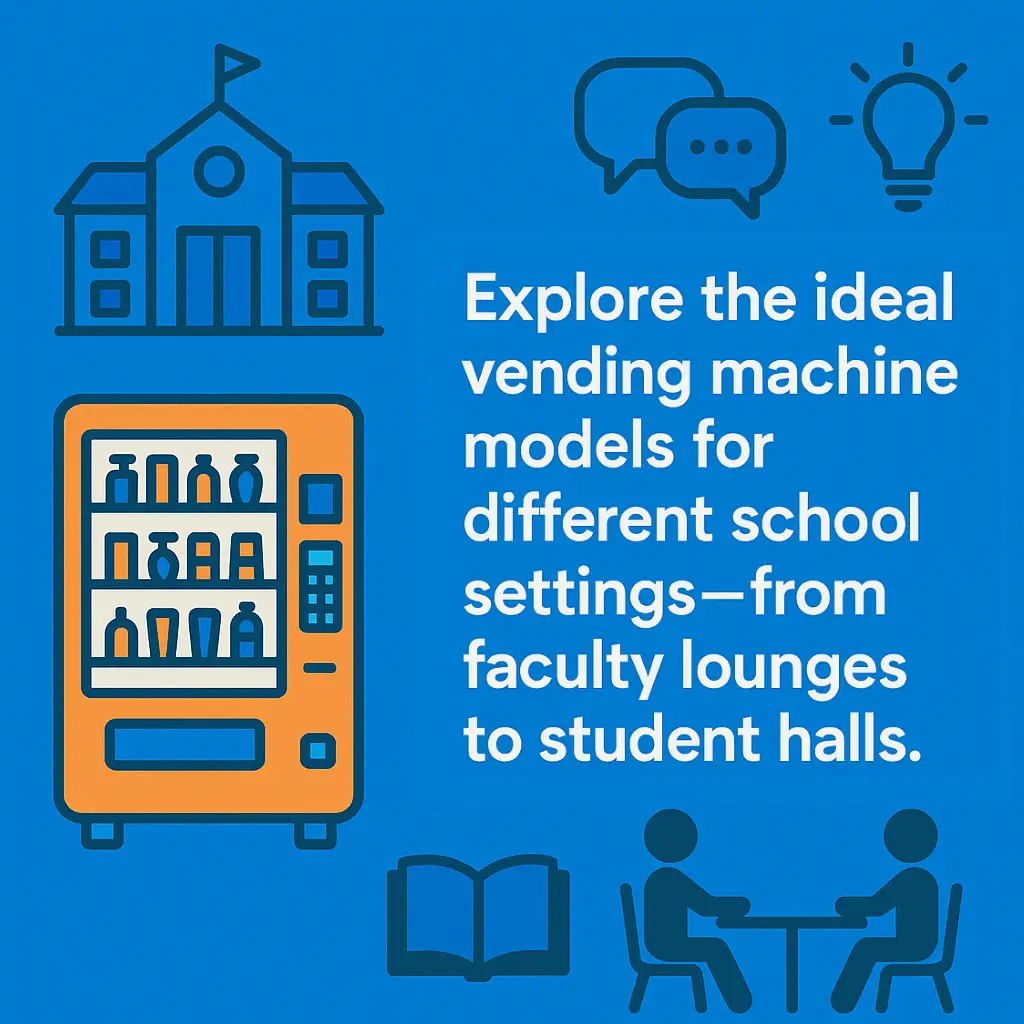Best Vending Machine Types for Schools
Explore the ideal vending machine models for different school settings—from faculty lounges to student halls.
Back to Vending for Schools ResourcesExplore the ideal vending machine models for different school settings—from faculty lounges to student halls.
Back to Vending for Schools ResourcesStudent halls often benefit from glass-front snack machines, while micro markets fit well in faculty lounges. Combo machines are space-saving for smaller campus areas. Choosing machines with smart tech supports better inventory and reduces downtime across all school zones.
![]() Micro markets offer variety and cater to school staff and students
Micro markets offer variety and cater to school staff and students
![]() Glass-front machines promote visibility and reduce product waste
Glass-front machines promote visibility and reduce product waste
![]() Smart AI coolers monitor freshness and enable cashless payments
Smart AI coolers monitor freshness and enable cashless payments

Schools have unique needs when choosing vending machines. Considerations like student safety, dietary preferences, and location-specific demand all factor into selecting the right models. Fortunately, several vending machine types are especially well-suited for education environments.
Combo machines remain a solid choice for schools with limited space, as they dispense both snacks and drinks from a single unit. These are commonly placed near gyms, hallways, or side entrances to serve student traffic while minimizing floor space.
Glass-front machines are another popular option. Their clear displays boost product visibility, helping students and faculty easily see the available options. These machines allow for better inventory turnover and can help reduce expired items—especially if stocked with fresh or healthier products.
In staff lounges or faculty breakrooms, micro markets provide a wide array of food and beverage choices. These open-access, self-checkout setups are perfect for longer break sessions or lunch hours. They can support shelf-stable meals, coffee, and refrigerated goods, offering faculty more convenience than standard vending units.
For schools focused on innovation and health compliance, AI-powered coolers are gaining traction. These smart, contactless units only unlock when a valid payment method is detected. They also monitor inventory in real time, improving service reliability and accountability—key benefits for high-traffic locations.
When choosing a vending machine, consider where it's being placed. Student halls often need crowd-resistant, quick-dispensing machines with multiple payment options. Staff areas may benefit more from premium machines with broader selections. Whichever machine type you deploy, reliability and service speed are crucial.
To expand food and drink choices even further, some schools explore campus-wide breakroom strategies. See how breakroom refreshment solutions can enhance the staff experience. Additionally, for residential-style dormitories, apartment beverage vending machines may be an appropriate model.
If you're exploring vending options for your business, Vending Exchange can help simplify the process. Delivery, Installation and Equipment is provided at no cost to you - vendors provide the machines, keep them stocked, and handle all servicing. Whether you need a provider or full-service management, just fill out the form on this page to get started.
Glass-front or combo machines work well, offering drink and snack variety in one place.
Yes, machines can be placed in supervised areas and stocked with age-appropriate snacks.
Absolutely. Schools can request specific snack and drink options to meet dietary guidelines.
Most modern machines accept contactless, credit cards, and can integrate with school ID cards.
Regular servicing is included—typically weekly, depending on usage and product types.
Micro markets can be sized to match the available space, ideal for faculty lounges or dorms.
Vendors with smart machines monitor remotely and can repair or replace units as needed quickly.
Yes, machines can be stocked with low-sugar drinks, high-protein snacks, and nutritious meals.
Yes, many machines come with reinforced glass and enclosures for added protection.
Setup can typically be completed within 7 days, depending on location readiness.